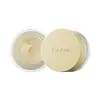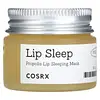What's inside
What's inside
 Key Ingredients
Key Ingredients

 Benefits
Benefits

 Concerns
Concerns

 Ingredients Side-by-side
Ingredients Side-by-side

Diisostearyl Malate
EmollientDipentaerythrityl Hexa C5-9 Acid Esters
Skin ConditioningHoney 10%
HumectantCyclopentasiloxane
EmollientBeeswax
Emulsion StabilisingWater
Skin ConditioningCaprylic/Capric Triglyceride
MaskingMicrocrystalline Wax
Emulsion StabilisingGlycerin
HumectantHydrogenated Poly(C6-20 Olefin)
AbrasiveDimethicone
EmollientDimethicone/PEG-10/15 Crosspolymer
Cetyl PEG/PPG-10/1 Dimethicone
EmulsifyingPEG/PPG-18/18 Dimethicone
EmulsifyingHdi/Trimethylol Hexyllactone Crosspolymer
1,2-Hexanediol
Skin ConditioningCaprylyl Glycol
EmollientDiisostearyl Malate, Dipentaerythrityl Hexa C5-9 Acid Esters, Honey 10%, Cyclopentasiloxane, Beeswax, Water, Caprylic/Capric Triglyceride, Microcrystalline Wax, Glycerin, Hydrogenated Poly(C6-20 Olefin), Dimethicone, Dimethicone/PEG-10/15 Crosspolymer, Cetyl PEG/PPG-10/1 Dimethicone, PEG/PPG-18/18 Dimethicone, Hdi/Trimethylol Hexyllactone Crosspolymer, 1,2-Hexanediol, Caprylyl Glycol
Petrolatum
EmollientHydrogenated Polyisobutene
EmollientDiisostearyl Malate
EmollientPolyisobutene
Phytosteryl/Isostearyl/Cetyl/Stearyl/Behenyl Dimer Dilinoleate
Skin ConditioningButyrospermum Parkii Butter
Skin ConditioningMicrocrystalline Wax
Emulsion StabilisingSorbitan Sesquioleate
EmulsifyingEthylene/Propylene/Styrene Copolymer
Euphorbia Cerifera Wax
Helianthus Annuus Seed Oil
EmollientButylene/Ethylene/Styrene Copolymer
Ethylhexylglycerin
Skin ConditioningGlycine Soja Oil
EmollientEclipta Prostrata Extract
Skin ConditioningBeeswax
Emulsion StabilisingWater
Skin ConditioningButylene Glycol
HumectantPentaerythrityl Tetra-Di-T-Butyl Hydroxyhydrocinnamate
AntioxidantHoney Extract
HumectantMelia Azadirachta Leaf Extract
Skin ConditioningBixa Orellana Seed Oil
EmollientRoyal Jelly Extract
Skin ConditioningGlycerin
HumectantMoringa Oleifera Seed Oil
EmollientPropolis Extract
Skin Conditioning1,2-Hexanediol
Skin ConditioningTocopherol
AntioxidantSaccharomyces Ferment
Skin ConditioningHoney
HumectantPetrolatum, Hydrogenated Polyisobutene, Diisostearyl Malate, Polyisobutene, Phytosteryl/Isostearyl/Cetyl/Stearyl/Behenyl Dimer Dilinoleate, Butyrospermum Parkii Butter, Microcrystalline Wax, Sorbitan Sesquioleate, Ethylene/Propylene/Styrene Copolymer, Euphorbia Cerifera Wax, Helianthus Annuus Seed Oil, Butylene/Ethylene/Styrene Copolymer, Ethylhexylglycerin, Glycine Soja Oil, Eclipta Prostrata Extract, Beeswax, Water, Butylene Glycol, Pentaerythrityl Tetra-Di-T-Butyl Hydroxyhydrocinnamate, Honey Extract, Melia Azadirachta Leaf Extract, Bixa Orellana Seed Oil, Royal Jelly Extract, Glycerin, Moringa Oleifera Seed Oil, Propolis Extract, 1,2-Hexanediol, Tocopherol, Saccharomyces Ferment, Honey
 Reviews
Reviews

Ingredients Explained
These ingredients are found in both products.
Ingredients higher up in an ingredient list are typically present in a larger amount.
1,2-Hexanediol is a synthetic liquid and another multi-functional powerhouse.
It is a:
- Humectant, drawing moisture into the skin
- Emollient, helping to soften skin
- Solvent, dispersing and stabilizing formulas
- Preservative booster, enhancing the antimicrobial activity of other preservatives
Beeswax is natural wax produced by honey bees and can be synthetically created. It consists mainly of fatty acid esters and long-chain alcohols.
In cosmetics, beeswax is a emollient. Due to its waxy structure, it creates a protective barrier. This barrier prevents water from evaporating off the skin.
This may not be a good ingredient for oily skin. We recommend speaking with a professional if you have concerns.
Beeswax cannot be removed with water, but can be taken off with an oil cleanser.
Beeswax is also antiseptic and contains vitamin A.
Learn more about BeeswaxDiisostearyl Malate is an emollient and most often used in lip products. It comes from isostearyl alcohol, a fatty acid, and malic acid, an AHA.
As an emollient, Diisostearyl Malate helps create a thin film on your skin to trap moisture in. This helps keep your skin soft and smooth.
Glycerin is already naturally found in your skin. It helps moisturize and protect your skin.
A study from 2016 found glycerin to be more effective as a humectant than AHAs and hyaluronic acid.
As a humectant, it helps the skin stay hydrated by pulling moisture to your skin. The low molecular weight of glycerin allows it to pull moisture into the deeper layers of your skin.
Hydrated skin improves your skin barrier; Your skin barrier helps protect against irritants and bacteria.
Glycerin has also been found to have antimicrobial and antiviral properties. Due to these properties, glycerin is often used in wound and burn treatments.
In cosmetics, glycerin is usually derived from plants such as soybean or palm. However, it can also be sourced from animals, such as tallow or animal fat.
This ingredient is organic, colorless, odorless, and non-toxic.
Glycerin is the name for this ingredient in American English. British English uses Glycerol/Glycerine.
Learn more about GlycerinHoney comes from bees. It is mainly made up of the sugars fructose and glucose.
Besides sugar, honey also contains amino acids, peptides, Vitamins A, C, and E. Vitamins A, C, and E.
As a humectant, honey is great at hydrating the skin. Humectants draw moisture from the air and hold it to your skin.
Honey also has antioxidant and antioxidant properties. Fun fact: darker honey has more antioxidants than light honey.
The antibacterial property of honey may make it effective at helping to treat acne. We recommend speaking with a professional if you have concerns.
Many people wonder if honey is vegan. It is technically a byproduct from bees. This is because honey is created from the digestive enzymes in a bee's stomach.
Remember to be kind to bees :) They are important for many ecosystems and are endangered.
Learn more about HoneyMicrocrystalline Wax is created by de-oiling petroleum. It is highly refined and purified before being added to cosmetics.
Microcrystalline Wax is used to enhance the texture and create even consistency. It helps stabilize a product by preventing ingredients from separating.
Water. It's the most common cosmetic ingredient of all. You'll usually see it at the top of ingredient lists, meaning that it makes up the largest part of the product.
So why is it so popular? Water most often acts as a solvent - this means that it helps dissolve other ingredients into the formulation.
You'll also recognize water as that liquid we all need to stay alive. If you see this, drink a glass of water. Stay hydrated!
Learn more about Water